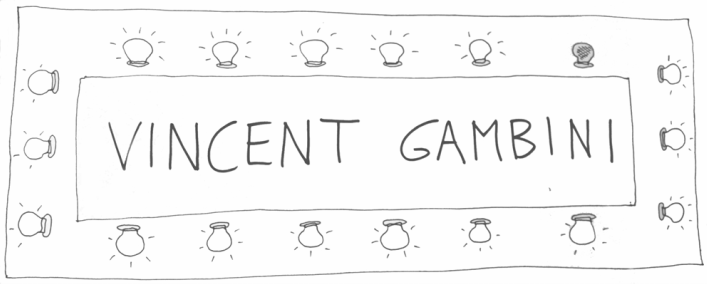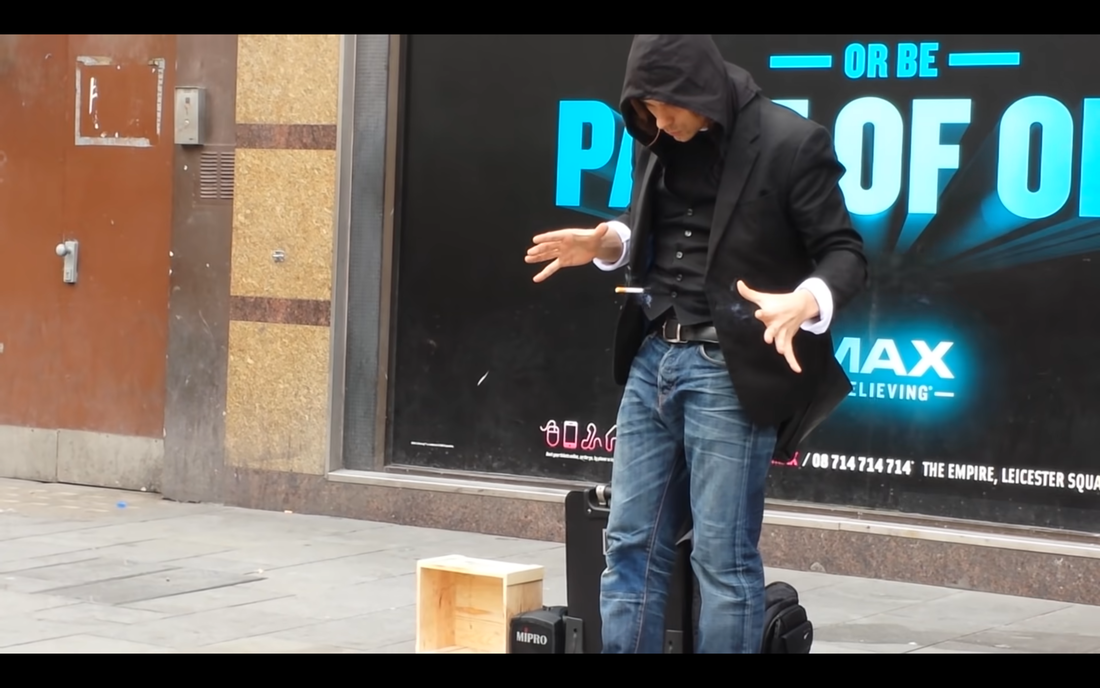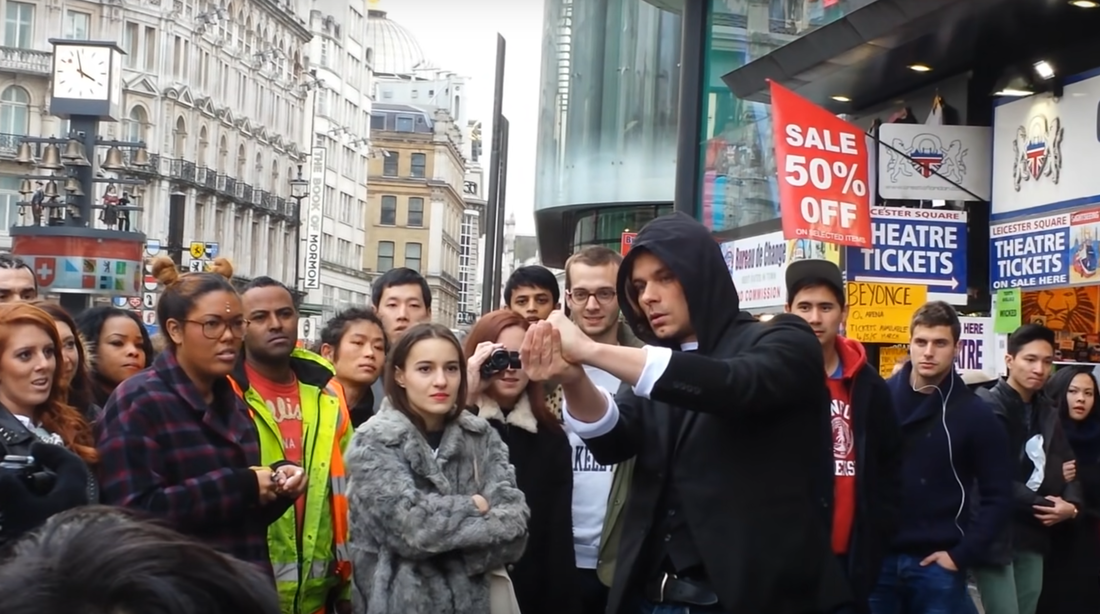I never met Diobo, and therefore I cannot pay tribute to his person. I do however want to briefly describe his act, and try to understand a thing or two about what made it so exceptional, in my eyes.
His act was a sequence of stunning magical episodes, marked by a distinctive tone and visual poetry. Much like a Variety entertainer, Diobo honed this one act over a long stretch of time (or so I gather, from watching online videos captured over several years), and distilled it to a kind of elegant core.
Like thousands of other people, I stumbled upon his act by chance, one day in Leicester Square in London, around 2015. I still cannot work out (despite returning to see him a few times) how graciously, and seemingly without any effort, the magician managed to form and retain the crowd: in silence, without making eye contact with passers-bye, Diobo stood with his head down, slowly waving his hands around a cigarette that was levitating in front of him. He kept his focus entirely on the lit cigarette, making it pass through his hooped hands, as though unaware of the crowd that was slowly but surely forming around him. And then, in a sequence that beautifully marked the start of the show, the cigarette slowly floated upwards, eventually reaching the magician’s lips: for the first time we could see his face in full. Diobo cast his eyes furtively around the crowd, inviting applause by gently placing his palms together. This sequence alone is a good example of the extreme simplicity, care and sophistication with which his act used arresting visual magic, an enticing and withdrawn stage persona, and extremely effective management of people, attention and street space.
A short digression:
About 20 years ago, after a few half-hearted attempts, I gave up trying to do any street magic. I thought I lacked the required ‘loudness’: I thought you needed big gestures, a loud voice, a cartoon-like amount of energy, and lots of audience interaction. Diobo’s act proved me wrong, and for the first time I realised a street magic act could possess qualities of reserve: a gentle quietness, as though the performer were privately making objects appear, change and vanish, occasionally looking up and realising an audience seems to have gathered.
The act itself can be summarised very briefly through the objects he used. First a cigarette levitates, and is discarded on the pavement or street. Looking down at the ground, Diobo finds a coin, which he briefly covers with his otherwise empty hands, to then reveal a living white mouse. He holds the mouse in between his hands, walks towards the audience (a first moment of minimal interaction), asks a spectator to blow on his hands, and reveals the mouse has disappeared (here Diobo might point towards the spectator’s rucksack or bag, suggesting they look inside to find the mouse, only to then dismiss such a suggestion as a joke).
Next he would find a white paper napkin, sometimes lying on the ground, at other times from his own bag. He would tear out a piece, fold it up and transform into a banknote, with which he would gently lure a spectator to join him (this was an effective bit of audience management: he’d extend the note to the spectator, who would reach out to take it. But Diobo quickly took the outreached hand, and pulled the spectator to the centre of the performing area). He would then place a newly lit cigarette inside a makeshift hole he’d made inside the spectator’s shirt or t-shirt, only to reveal the clothing to be intact, and the cigarette to have vanished. Last but not least, he would take a piece of the white paper napkin, wet it, and squeeze it into a ball, which he’d place inside a large wine glass; slowly shacking the glass, the small ball would grow into a perfectly formed egg. He would take the egg out, then place the glass stem side up onto the spectator’s extended palm: breaking the egg in two, the white mouse would crawl out and rest on top of the glass, beautifully framing the surprised face of the spectator, and bringing the act to an end.
I was struck by the simple colour palette: the white objects (white cigarette, white mouse, white napkin, white egg), which stood out so well against his mainly dark clothes; Diobo typically wore an odd black waistcoat with a hood, which gave him a 'sorcerer' look, but with a distinctly urban style: he often wore jeans and simple black plimsolls.
More than anything, I was struck by the ‘journey’ of the act: even without a story, each trick was linked, through a kind of inner poetic logic, with the mouse featuring as the main punch line. Its structure could read as:
Opener: A cigarette floats.
First movement: a coin transforms into a mouse, and then the mouse disappears.
Second movement: A piece of paper turns into a banknote, then a cigarette disappears inside an item of the spectator’s clothing.
Third movement: A piece of paper slowly turns into an egg, from which the white mouse finally emerges.
In its elegant logic, it reminds me of the stage act by Dutch magician Tommy Wonder (also featuring an egg, and a mechanical bird emerging from it). A comparable grace: an unhurried, sparse yet meticulous sequence of visual events, each folding into the next. And audience members charmed, entranced, allowed to access our childlike wonder, as though it were as simple as closing our eyes to dream.
Thank you Diobo for the hard work in creating something so beautiful and touching.
PS A video recording of the act is available to view here.



 RSS Feed
RSS Feed